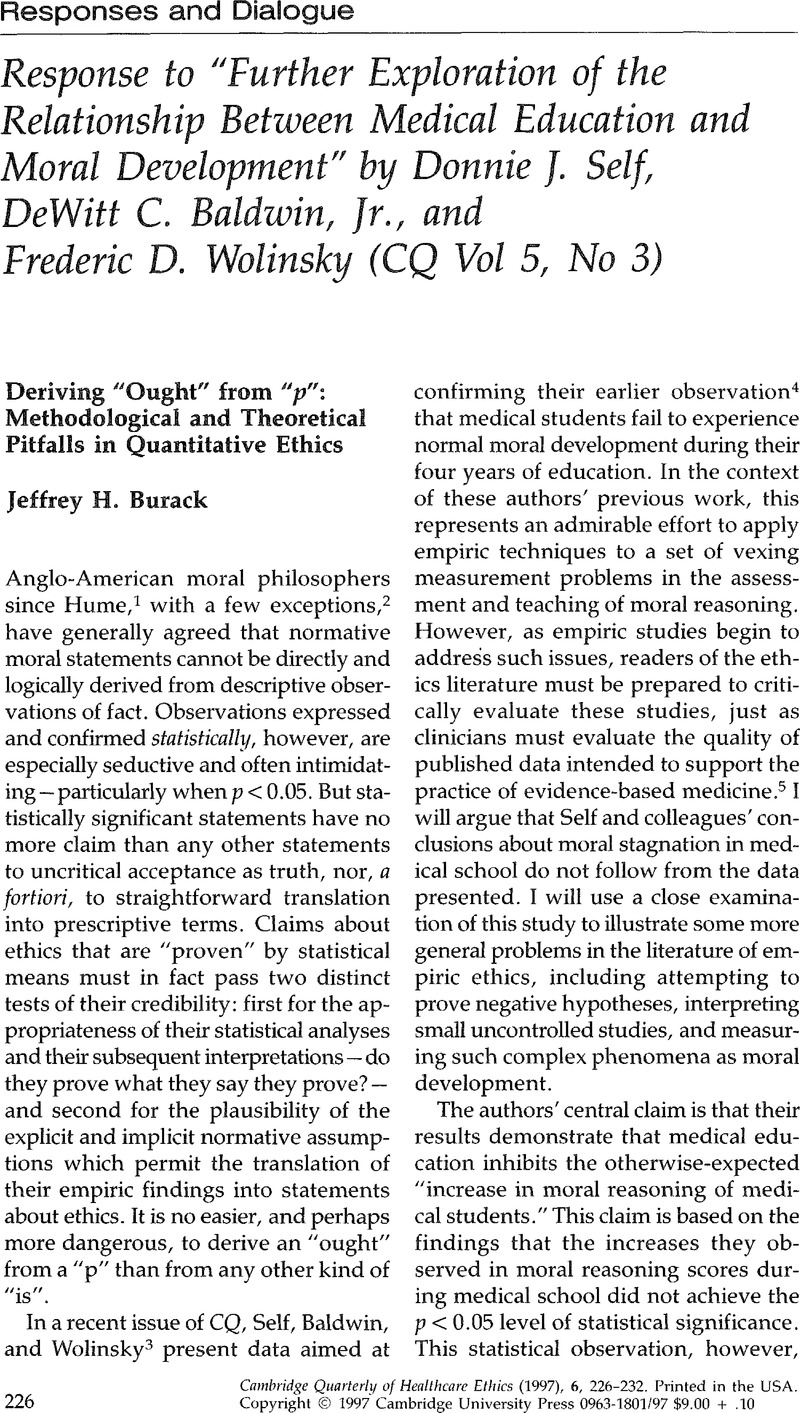No CrossRef data available.
Published online by Cambridge University Press: 29 July 2009

1. Hume, D. Enquiries Concerning Human Under standing and Concerning the Principles of Mor als. Oxford, England: Clarendon Press, 1975.CrossRefGoogle Scholar
2. Hare, RM. The Language of Morals. Oxford, England: Clarendon Press, 1961.Google Scholar
3. Self, DJ, Baldwin, DC Jr, Wolinsky, FD. Further exploration of the relationship between med ical education and moral development. Cambridge Quarterly of Healthcare Ethics 1996;5:444–9.CrossRefGoogle Scholar
4. Self, DJ, Schrader, DE, Baldwin, DC Jr, Wolin, sky FD. A pilot study of the relationship of medical education and moral development. Academic Medicine 1991;66:629.CrossRefGoogle ScholarPubMed
5. Evidence-Based Medicine Working Group. Evidence-based medicine: a new approach to teaching the practice of medicine. JAMA 1992; 268:2420–5.CrossRefGoogle Scholar
6. Browner, WS, Newman, TB. Are all significant p values created equal? JAMA 1987;257: 2459–63.CrossRefGoogle ScholarPubMed
7. Browner, WS, Black, D, Newman, TB, Hulley, SB. Estimating sample size and power. In Hulley, SB, Cummings, SR, eds. Designing Clin ical Research: An Epidemiologic Approach. Balti more, MD: Williams and Wilkins, 1988.Google Scholar
8. Gilligan, C. In a Different Voice: Psychological Theory and Women's Development. Cambridge, MA: Harvard University Press, 1982.Google Scholar
9. Gaensbauer, TJ, Mizner, GL. Developmental stresses in medical education. Psychiatry 1980; 43:60–70.CrossRefGoogle ScholarPubMed
10. Noddings, N. Caring: A Feminine Approach to Ethics and Moral Education. Los Angeles and Berkeley: University of California Press, 1984.Google Scholar
11. Lipkin, M. Integrity, compassion, respect. Journal of General Internal Medicine 1986;1:65–7.CrossRefGoogle ScholarPubMed
12. Pellegrino, ED. Teaching medical ethics: some persistent questions and some responses. Academic Medicine 1989;64:701–3.CrossRefGoogle ScholarPubMed